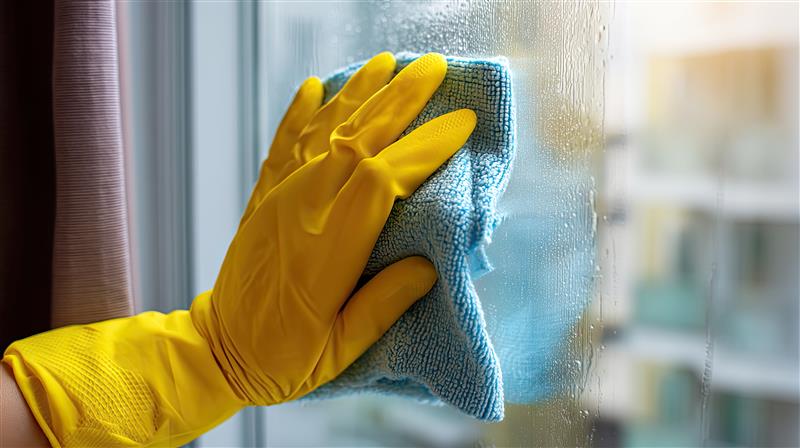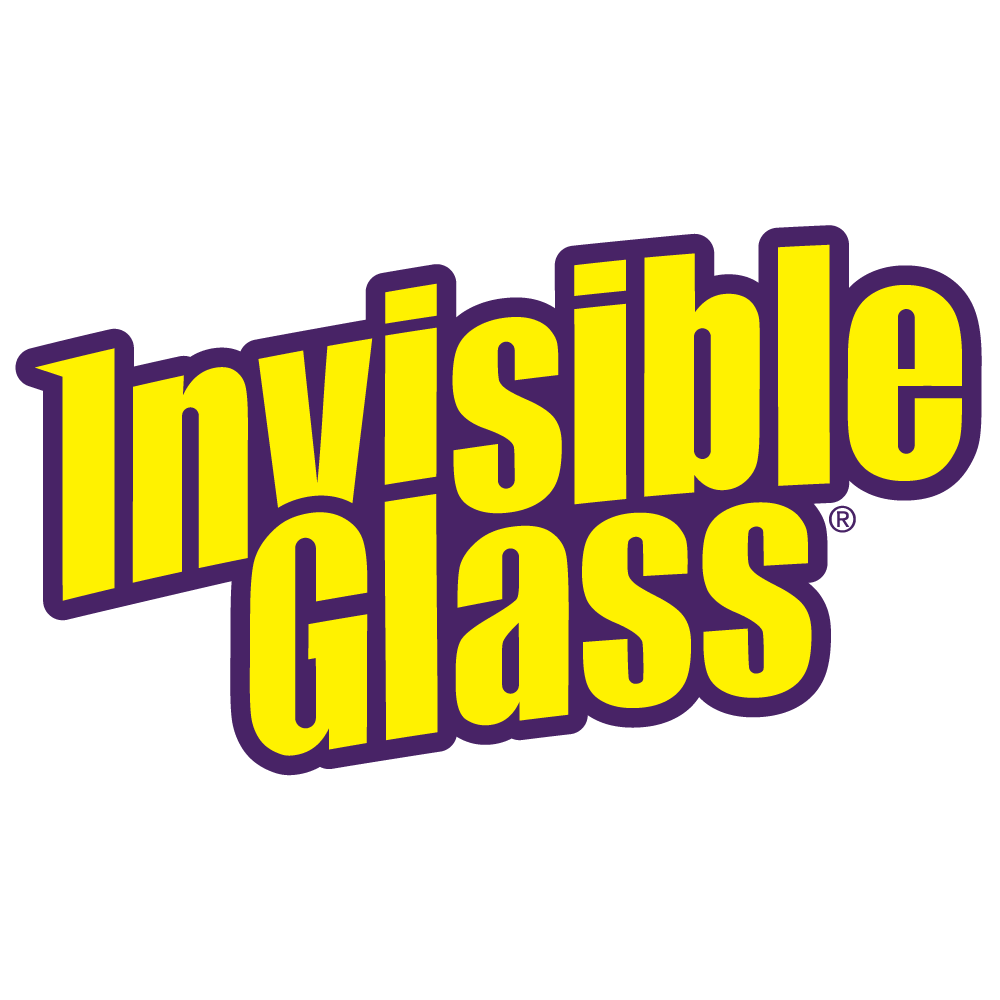
Cleaning glass around the house—whether it’s windows, mirrors, tabletops, or shower doors—sounds simple. Spray, wipe, done. But anyone who’s tackled glass in natural sunlight knows the reality: streaks, smudges, and stubborn haze can stick around no matter how much effort you put in.
It’s easy to blame the cleaner, but the real issue is often technique. One of the biggest variables is whether you’re using a single towel or a two-towel method. That choice affects clarity, drying, and how likely you are to leave marks behind.
In this guide, we’ll break down the difference between the single and two-towel methods, explain why glass is so tricky to clean, and help you pick the right approach for your next cleaning session.
Why Glass Is Tricky to Clean
Glass looks smooth, but even the smallest residue can stand out. Fingerprints, dust, oils, and leftover cleaner sit right on the surface, where they scatter light and create streaks or haze.
When glass is truly clean, light passes through or reflects evenly. That’s what gives it a clear, sharp finish. But anything left behind—smudges, water spots, or product residue—interrupts that clarity. Some buildup, like minerals from hard water or harsh cleaners, can even etch or cloud the surface over time.
Drying speed matters too. If your cleaning spray evaporates before you wipe, especially in direct sunlight, it can leave streaks behind. That’s one reason technique is just as important as the cleaner you choose.
Common Causes of Glass Streaks
|
Cause |
What Happens |
|---|---|
|
Oils and fingerprints |
Sit on the surface and scatter light unevenly |
|
Dust and debris |
Stick to cleaner or get dragged by cloth, leaving marks |
|
Evaporated cleaner |
Dries too fast, leaving behind streaks or spots |
|
Hard water minerals |
Leave cloudy deposits that dull the finish |
|
Harsh chemicals |
Can damage or etch the surface, especially on mirrors or tinted glass |
💡Quick Tip: Always clean glass in the shade or when the surface is cool to the touch. It gives you more time to wipe before the cleaner dries.
The Single-Towel Method: Fast and Simple, With Some Tradeoffs
The single-towel method uses one microfiber towel to apply cleaner and dry the surface. It’s the go-to technique for quick jobs because it’s convenient. Spray the glass, wipe it down, and move on.
This method can work well for small areas or light touch-ups. A few fingerprints on a bathroom mirror or a quick swipe across a patio door might not require anything more.
But on larger surfaces or dirtier glass, this approach starts to break down. As the towel picks up cleaner, dust, and oils, it becomes saturated. Once that happens, it stops lifting residue and starts smearing it. Instead of removing grime, you’re moving it around.
Your cleaning cloth will hold on to whatever it picks up. That means any dirt trapped in the fibers can be redistributed across the glass, leaving behind streaks, haze, or cloudy patches, especially noticeable in natural light.
For those aiming for a spotless finish, the single-towel method often falls short.
The Two-Towel Method: Professional Results That Hold Up in Sunlight
Professional window cleaners and housekeepers rely on the two-towel method for a reason. It uses one towel to clean and a second dry towel to polish the surface to a streak-free shine.
The first towel applies the cleaner and lifts away dirt, oils, and residues. As that towel becomes damp and soiled, it’s set aside. The second towel—clean and dry—then buffs the glass to clarity. This step removes leftover moisture before it can dry and cause streaks.
Separating cleaning and drying gives you better results. The dry towel doesn’t reintroduce grime or spread moisture around. It also gives you more control over pressure and direction, which helps reduce smudging during the final pass.
The two-towel method works especially well on large windows, glass doors, mirrors, and other highly reflective surfaces where streaks are easy to spot.
Why Microfiber Matters More Than You Think
Whether you use one towel or two, the material matters. Microfiber is the top choice for glass because of its fine, dense fibers. These fibers lift and trap dirt, dust, and oils without scratching the surface.
Microfiber is also highly absorbent and leaves no lint behind. That’s a big advantage over paper towels, cotton rags, or old T-shirts, which can smear grime or shed fibers as you clean.
Not all microfiber is the same, either. Waffle-weave cloths are ideal for drying and buffing, while plusher versions work well for applying cleaner and lifting debris.
Pairing the right microfiber towel with the two-towel method gives you the clarity and streak-free results professionals rely on.
When to Use One Towel vs. Two
|
Method |
Best For |
Why It Works |
|---|---|---|
|
Single-Towel |
Quick touch-ups, light dust, small mirrors, or windows |
Fast and simple for minor cleaning. Less laundry. |
|
Two-Towel |
Larger surfaces, dirty glass, detailed cleaning, and sunlight-exposed areas |
Separates cleaning and drying. Reduces streaks and haze. |
Pro Techniques for Better Results
Small changes in how you clean can make a big difference in how your glass looks afterward. These tips help reduce streaks, avoid damage, and get professional-level results:
Professional results come from smart technique and the right tools. These tips help reduce streaks, avoid damage, and keep your glass surfaces looking their best:
● Choose a purpose-built cleaner. Invisible Glass cleans without streaks because it’s made specifically for glass. It evaporates quickly, leaves no residue, and contains no soaps, scents, or dyes that could dull the finish.
● Avoid paper towels and abrasive cloths. These can scratch glass or leave behind lint. Use clean, high-quality microfiber instead.
● Work in small sections. Spray and wipe before the cleaner dries to avoid streaking.
● Clean in cool conditions. Avoid direct sunlight or warm surfaces so the cleaner doesn’t evaporate too fast.
● Change towels often. A saturated towel won’t clean well and may smear dirt or cleaner across the surface.
● Wipe in different directions. Try wiping one side vertically and the other horizontally. It makes it easier to spot and correct any streaks.
● Pre-treat problem spots. For hard water marks or sticky residue, dab a bit of rubbing alcohol on a clean cloth and treat the area before cleaning.
● Don’t forget the edges. Dirty frames and sills can transfer grime right back onto the glass if ignored.
Get the Clarity You’re Looking For
The single-towel method works in a pinch, but it rarely delivers the spotless, streak-free finish most people want. The two-towel method takes a little more time, but it gives you the kind of clear, polished results that stand up to sunlight and close inspection.
If you’re doing a quick touch-up, one towel may be all you need. But for mirrors, windows, or glass doors where appearance matters, using two towels—with the right microfiber and a quality glass cleaner—makes a visible difference.
With the right tools and techniques, you can make your household glass look professionally cleaned every time.



